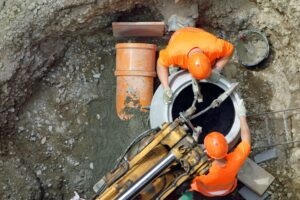Flooding is a real problem and threat to cities, and it’s more important than ever to prepare for with climate change causing more extreme weather. Merritt, BC recently dealt with what happens when flooding becomes extreme without the proper measures to account for it, and the damage caused by said flooding that happened is still being repaired to this day. That’s why flood mitigation is so important.
Below, we break down some of the ways flood mitigation can be implemented in cities.
Flood Mitigation Strategies for Cities: Building Flood Plains
Flood plains used to be one of the most popular ways to prevent floods in Europe. In some cases, they are naturally forming as over many, many years the areas next to rivers have been eroded away from previous floods and formed natural basins when floods occur and prevent damage to the surrounding environment.
In other cases, they can be man-made next to rivers to ensure floods don’t make their way past the flood plains into cities.
Setting Up Sewage Differently
When extreme rainfall occurs, most cities simply have stormwater drains that direct water into them and the rainwater gets filtered along with the rest of the sewage. However, what happens when there’s too much rainwater for the sewage system to handle?
To solve this problem, some cities are starting to build in extra drainage systems where rainwater gets its own piping system in cities. This way, sewage and stormwater don’t back up the pipes when rainfall is too extreme and can be added in accordingly to the sewage system when the system can handle it at the treatment plant so that the sewage system isn’t overwhelmed.

Optimizing and Maintaining Stormwater and Sewage Systems
While it may seem obvious to simply just maintain stormwater and sewage systems, ensuring the proper flood mitigation is ready goes deeper than that. Sewage and drainage systems get clogged with garbage and debris over time, so even if a city drainage system could handle a flood if the pipes were cleaned out, they might not be able to handle the water if they’re clogged or filled up with trash.
Proper maintenance can help, but so can optimization of both the types and sizes of pipes used so that the system can handle issues, and that the right safety measures are in place if flooding problems arise.
Setting Up Sustainable Drainage
As it turns out, one of the solutions to better flood mitigation was under our feet the whole time—literally. Concrete isn’t permeable, so areas like sidewalks, roads, and walking paths are resistant to water. Which, when designed poorly, can direct water into less favourable or even unsafe areas. One way that’s being tried to combat this is by adding grass and gardens within sidewalks and other areas to help rainwater permeate into the earth and avoid getting redirected into the sewage systems.
Overall, there are quite a few ways to help mitigate flooding, and even good maintenance and replacement of drainage systems can make a notable difference.
